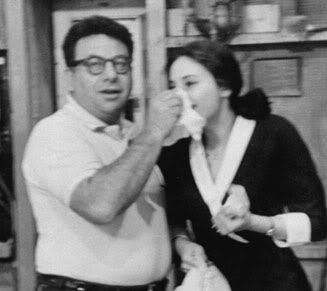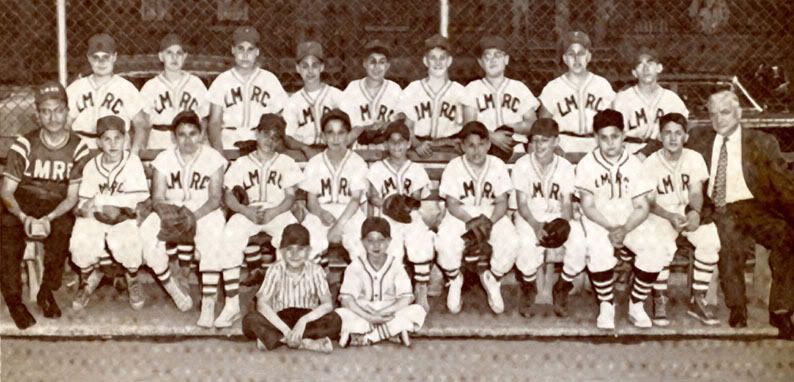Dave Kehr in the nytimes of 11/24/08 wrote
It’s hard to deduce from either of these releases that Ritt — the director of “Hud” (1963), “The Front” (1976) and “Norma Rae” (1979) — was once considered a major Hollywood filmmaker. He isn’t mentioned on the front cover of either disc. Like so many filmmakers who racked up awards and earned sterling reviews during their careers, he seems to have been forgotten by history, perhaps because his movies were so deeply embedded in the times in which they were made. They draw on or react against contemporary events to such a degree that, once their contexts have been taken away, they no longer mean what they once did. Ritt, who died in 1990 not long after directing Robert De Niro and Jane Fonda in the sincere but maladroit working-class romance “Stanley & Iris,” might not have been the most able stylist in the world, but he deserves better than oblivion.
Ritt certainly deserves better than that. What films being made now are better than his? Hud is one of my favorites. The scene of Melvyn Douglas singing his heart out in the movie theater is great
Hud is a 1963 film which tells the story of a self-centered, modern-day cowboy. It stars Paul Newman, Melvyn Douglas, Patricia Neal, Brandon De Wilde and Whit Bissell. The movie was primarily filmed in Claude, Texas.
The movie was adapted by Harriet Frank Jr. and Irving Ravetch from the novel Horseman, Pass By by Larry McMurtry and was directed by Martin Ritt.
It won Academy Awards for Best Actor in a Supporting Role (Melvyn Douglas, who won against Bobby Darin in Captain Newman, M.D.), Best Actress in a Leading Role (Patricia Neal) and Best Cinematography, Black-and-White (James Wong Howe). It was nominated for Best Actor in a Leading Role (Paul Newman), Best Art Direction-Set Decoration, Black-and-White, Best Director and Best Writing, Screenplay Based on Material from Another Medium.
Hud Bannon (Paul Newman) is an unscrupulous, arrogant, brash, and self-centered man. He has few interests other than enjoying himself and avoiding responsibility. His life is limited to drinking, starting barroom brawls, joyriding in his sporty pink Cadillac, and sleeping with women (married or otherwise). Although his elderly rancher-father Homer (Melvyn Douglas) is a deeply principled man, none of his ethics have rubbed off on Hud. Homer uses every opportunity to remind Hud of what a disappointment he is.
Also living at the Bannon Ranch is Hud's teenage nephew Lonnie (Brandon De Wilde), the son of Hud's deceased brother who died as a result of Hud's recklessness. Hud believes that his brother's death is the primary cause of Homer's anger and resentment toward him. However, Homer reveals that his disappointment runs deeper than that, saying that Hud cares about no one but himself and is unprincipled. Hud says, "My mama loved me, but then she died." (In McMurtry's novel, Hud's mother - Homer's second wife - is still alive.)
Lonnie and Hud are both attracted to the Bannons' middle-aged housekeeper, Alma (Patricia Neal), and Hud is as crude and insulting to her as Lonnie is protective. Although Hud's fondness for her is (at first) somewhat mutual, Alma keeps her distance because she has already been "around the block" with macho womanizers like Hud. (Alma comments to Hud, at one point during the film, "I've done my time with one cold-blooded bastard, I'm not looking for another.")
Homer buys some cheap Mexican cattle which have foot-and-mouth disease and his entire herd becomes infected. Hud recommends they quickly sell them to someone else before word gets out. But Homer will not resort to such unethical tactics; he calls in a state veterinarian. The cattle are quarantined by the vet, who ultimately rules the entire herd must be destroyed so as not to spread the infection. Although this will likely bankrupt the Bannons, Homer complies rather than risk spreading the disease or passing the problem onto unsuspecting ranchers. Hud is angry that his inheritance has been eroded; he attempts to have Homer declared legally incompetent, so he can usurp control of their ranch.
In a drunken rage, Hud forces himself sexually onto Alma. Lonnie comes to Alma's aid. She abruptly flees the ranch, disgusted and demoralized at Hud's brutishness. After Lonnie drops her off at the bus station, Hud happens by as she is waiting. He apologizes for his drunken assault, but not for his attraction to her. Driving back to the ranch, Lonnie spots his grandfather at the roadside. Homer has fallen off his horse during a survey of his property. Hud pulls up behind Lonnie, and both try to help Homer, but he does not survive. At the very end, Homer accuses Hud of being eager for him to die.
Although Lonnie initially idealized Hud for his charm and liveliness, he has become disgusted at Hud's treatment of Homer and Alma. After Homer's funeral, Lonnie leaves the ranch to get away from Hud, not sure if he will ever return. Lonnie tells Hud to put his half of their inheritance in the bank, then walks off. For a moment, Hud feels the emptiness of his life, which he has created by driving everyone who loved him away. But after a swig of beer and a moment's thought, he dismisses Lonnie's departure with a deprecating wave and a smile of indifference and goes back into the Bannon house, alone.



























